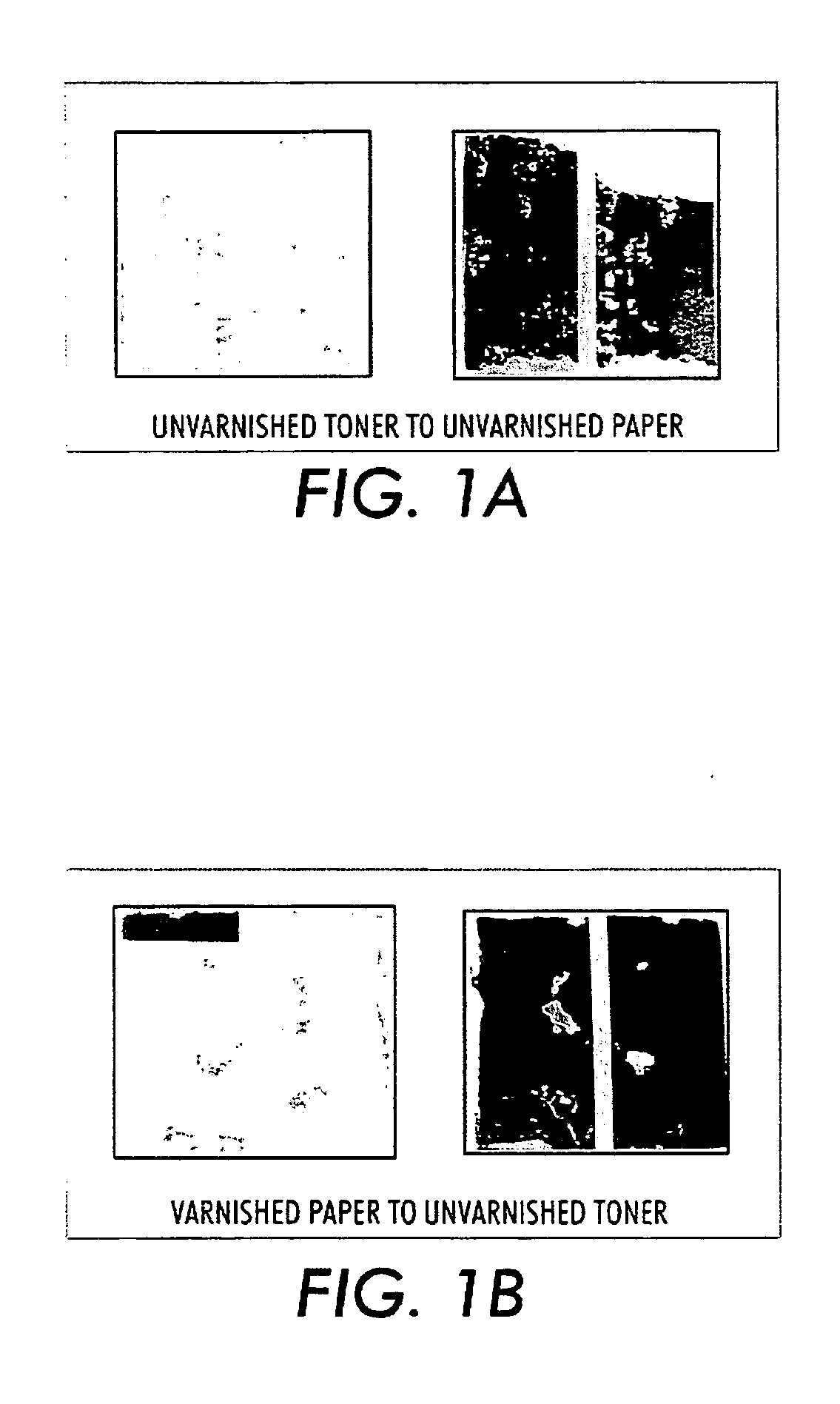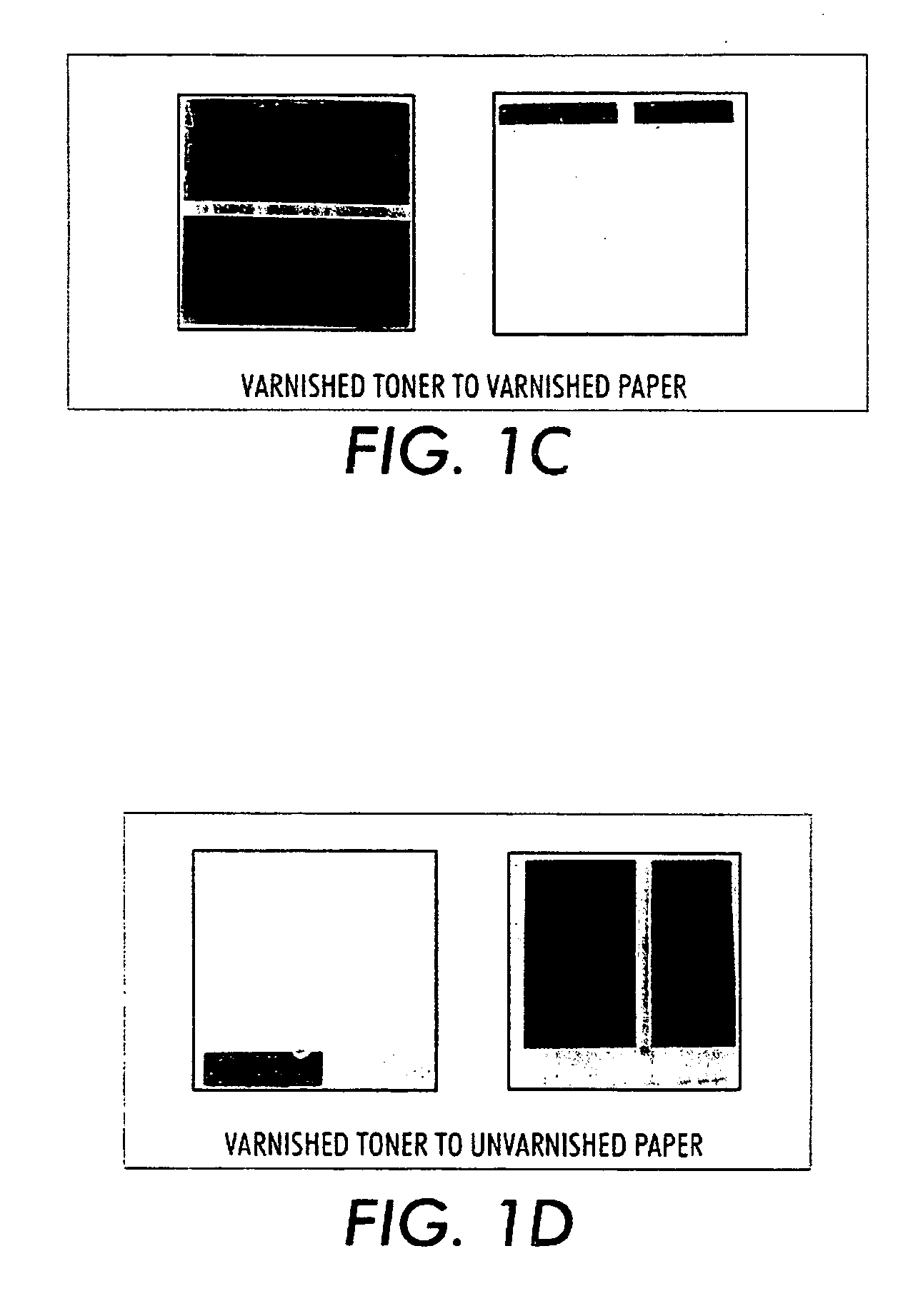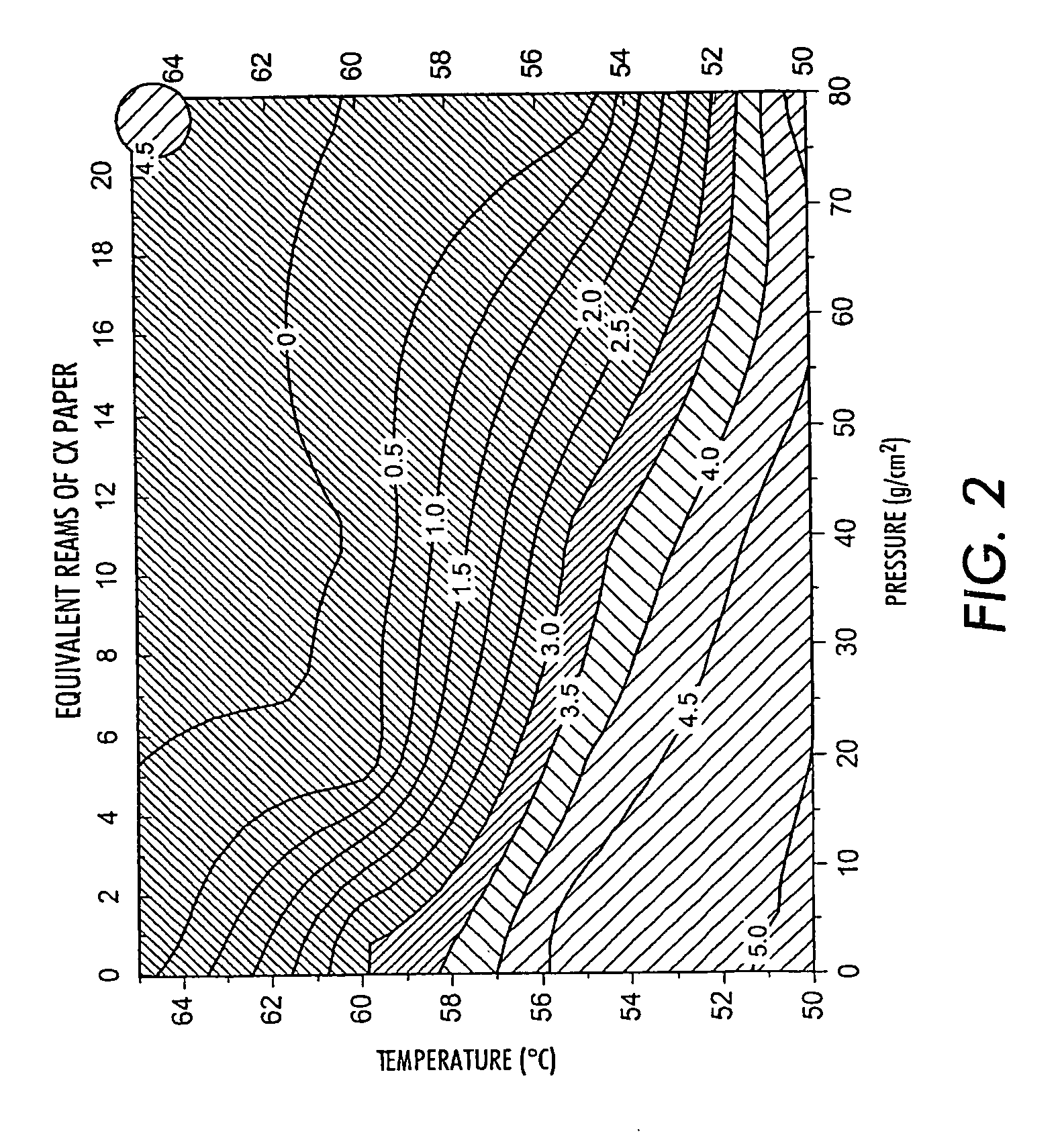Overprint compositions for xerographic prints
a composition and xerographic technology, applied in the direction of electrographic process, impression caps, instruments, etc., can solve the problems of document offset (or “blocking”), image defect, and image defect, and achieve the effects of reducing document offset, preventing thermal cracking, and reducing or preventing thermal cracking
- Summary
- Abstract
- Description
- Claims
- Application Information
AI Technical Summary
Benefits of technology
Problems solved by technology
Method used
Image
Examples
example 1
Overprint Composition Formulation
[0042] The components of the overprint composition were combined in the following order with brief agitation between each addition with an overhead mixer: 67.8% amine modified polyether acrylate oligomer (3388 grams Laromer® PO94F (BASF Corp.)), 27% propoxylated2 neopentyl glycol diacrylate (1351 grams SR-9003 (Sartomer Co., Inc.)), 5.1% UV photoinitiator (1-hydroxyclyclohexylphenyl ketone (241 grams Irgacure® 184 (Ciba-Geigy Corp.)) and ethyl-2,4,6-trimethylbenzoylphenylphosphinate (15 grams Lucirin® TPO-L (BASF Corp.))), and 0.1% polyether modified polydimethylsiloxane (5.0 grams BYK®-UV3510 (BYK Chemie GmbH)). The mixture was stirred at room temperature for about four hours at high shear with an overhead mixer until the oligomer dissolved.
[0043] The overprint composition was coated on a variety of xerographic prints at a thickness of about 5 microns. The composition was subsequently cured using a Dorn SPE three roll coater (Dorn SPE, Inc.) with ...
example 2
Document Offset—Comparative Example using an iGen3® (Xerox Corp.) Toner
[0044] Using the overprint composition of Example 1, coated and uncoated xerographic prints and coated and uncoated xerographic paper were subjected to conditions of 70° C. at 50% relative humidity (r.h.) under 80 g / cm2 pressure for 24 hours. An iGen3® (Xerox Corp.) toner, a low-melt toner with a Tg of about 55° C., was used on the prints.
[0045] As illustrated in FIGS. 1A-1D, the overprint composition improved document offset (DO) from a grade of 0 (total substrate and toner failure) to a grade of 4.5 (no visible DO, slight tack between samples) on a scale of 0 (worst)-5 (best) (Table 2). FIG. 1A illustrates that toner from an uncoated print transferred to uncoated paper (DO=0). FIG. 1B illustrates that toner from a coated paper transferred to an uncoated print (DO=0). FIG. 1C illustrates that toner from a coated print did not transfer to coated paper (DO=4.5). FIG. 1D illustrates that toner from a coated print...
example 3
Document Offset—Comparative Example using FCII Toner (Fuji Xerox Corp.)
[0047] Using the overprint composition of Example 1, coated and uncoated xerographic prints were subjected to various pressures (4-80 g / cm2) and temperatures (60-90° C.) at 50% r.h. for 24 hours. FCII toner, a low-melt toner with a Tg of about 62° C. from Fuji Xerox Corp., was used on the prints. The results were graded on a scale of 0 (worst)-5 (best) (Table 2) and mapped (FIGS. 3A-3B).
[0048]FIG. 3A shows that on an FCII toner-based print without the overprint composition, document offset failure begins at approximately 62° C. FIG. 3B shows that on an FCII toner-based print with the overprint composition, document offset failure begins above 70° C. at high pressure and above 90° C. at low pressure.
PUM
| Property | Measurement | Unit |
|---|---|---|
| surface tension | aaaaa | aaaaa |
| viscosity | aaaaa | aaaaa |
| surface energy | aaaaa | aaaaa |
Abstract
Description
Claims
Application Information
 Login to View More
Login to View More - R&D
- Intellectual Property
- Life Sciences
- Materials
- Tech Scout
- Unparalleled Data Quality
- Higher Quality Content
- 60% Fewer Hallucinations
Browse by: Latest US Patents, China's latest patents, Technical Efficacy Thesaurus, Application Domain, Technology Topic, Popular Technical Reports.
© 2025 PatSnap. All rights reserved.Legal|Privacy policy|Modern Slavery Act Transparency Statement|Sitemap|About US| Contact US: help@patsnap.com



